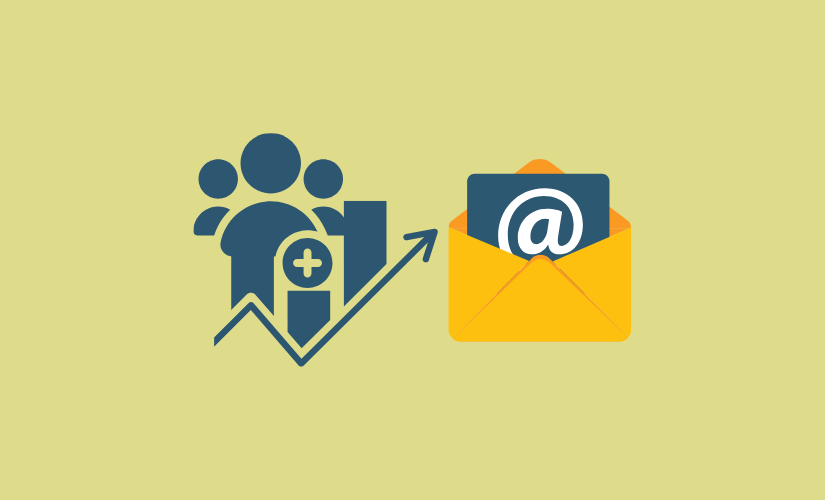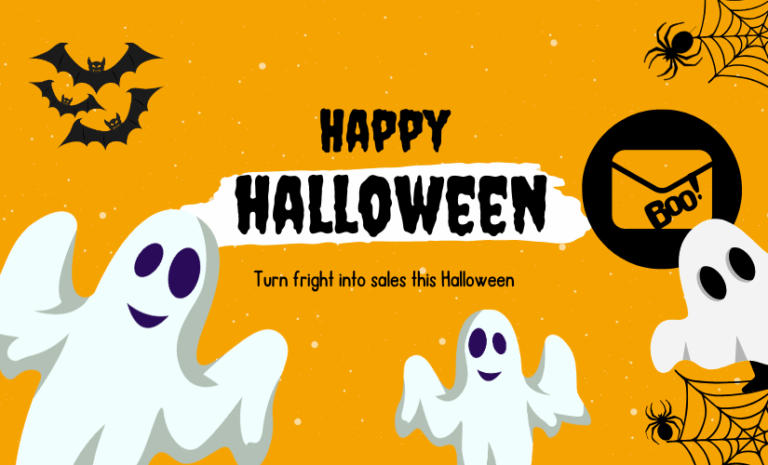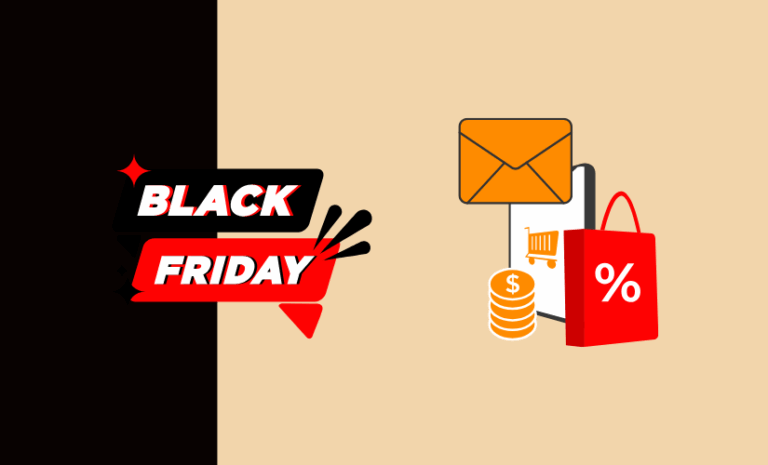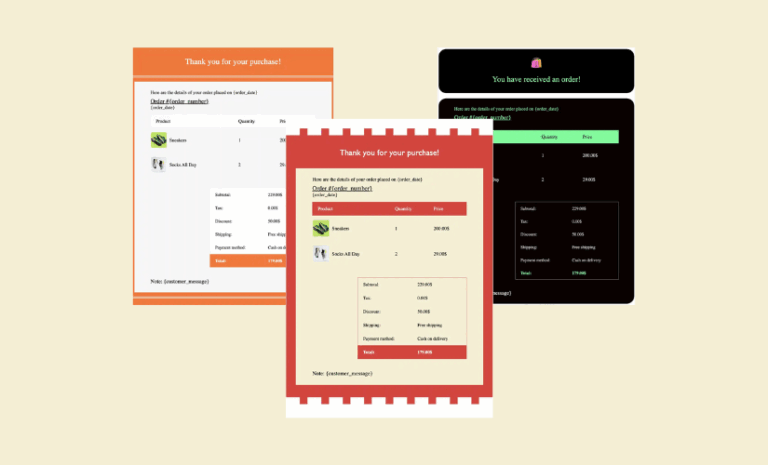Looking to grow email subscriber lists for eCommerce stores? Discover our 10+ proven strategies to expand your list and turn subscribers into loyal customers.
Email marketing is one of the most powerful tools for boosting sales and introducing potential customers to your products and services. The larger your subscriber list, the greater your reach and the better your chances of driving conversions. That’s why growing email subscriber lists is essential for any eCommerce store aiming for sustained success.
A strong email list not only increases customer engagement but also drives sales and strengthens brand loyalty. With the right mix of creative and strategic methods, you can turn potential customers into loyal subscribers.
In this guide, you’ll find a comprehensive set of proven strategies—some familiar, others new—to help you effectively grow your email subscriber list and get the best out of your email marketing for eCommerce stores.
Proven Strategies to Grow Email Subscriber Lists for eCommerce Stores
Growing this list requires more than just basic tactics; it demands a blend of proven strategies tailored to attract and retain the right audience. By employing targeted methods that resonate with your potential customers, you can turn casual site visitors into dedicated subscribers.

Let’s cover a range of tested strategies to help your eCommerce store effectively grow its email subscriber list and foster a loyal customer base.
1. Collect Customers’ Emails at Checkout
The checkout page is an excellent place to capture email addresses, as customers are already engaged with your brand:
- Opt-In Checkbox: Add an option during checkout for customers to subscribe to your newsletter or receive updates. This small step can significantly increase your subscriber list.
- Order Updates: Encourage email sign-ups by letting customers know they’ll receive order status updates and delivery confirmations.
2. Collect Emails for Back-in-Stock Notifications
Back-in-stock notifications are an easy way to gain subscribers from customers who may otherwise leave without purchasing:
You can allow customers to enter their email to receive alerts when an out-of-stock product becomes available. This not only provides convenience but also keeps them engaged with your brand.
3. Provide Gated Content Offers to Educate Customers
Offering valuable content that is only accessible after an email sign-up can build your subscriber list while delivering useful information:
- Ebooks and Guides: Create downloadable content, like product guides, style guides, or recipes, relevant to your products. Customers interested in this content are more likely to convert.
- Exclusive Tutorials and Webinars: Hosting a tutorial or webinar that requires registration via email can help capture leads while providing value.
4. Start a Loyalty Program in Exchange for Emails
Loyalty programs give customers an incentive to subscribe while promoting repeat purchases and brand engagement:
- Points and Rewards: Offer points or rewards for signing up with their email, and additional points for referrals, reviews, or social shares.
- Exclusive Perks: Make email subscribers part of a “VIP” tier in your loyalty program with exclusive perks like early access to new collections or members-only discounts.
5. Add a Product Recommendation Survey
Product recommendation surveys can capture email leads while providing a personalized shopping experience:
- Personalized Offers: Include a brief quiz on your website that, upon completion, offers personalized product recommendations. Ask customers to sign up with their email to see the results.
- In-Store Preferences: Use this information to segment your email list based on customer preferences, making future marketing efforts more targeted and effective.
6. Add a Newsletter Signup Call-to-Action to Your Social Media Platforms
Social media is a great place to encourage your followers to subscribe to your emails:
- Bio Links: Place a sign-up link in your social media bio on platforms like Instagram, Facebook, and Twitter.
- Pinned Posts and Stories: Regularly post stories and pin posts promoting the benefits of your newsletter. Offer exclusive discounts or early access to sales for subscribers.
7. Include Newsletter Signups Throughout Your Website
Make it easy for website visitors to sign up for your newsletter by placing CTAs in multiple areas:
- Homepage: Place a prominent newsletter sign-up banner on your homepage.
- Footer and Sidebar: Include sign-up boxes in the footer or sidebar of your website to capture visitors wherever they may be.
- Product Pages: Encourage users to sign up for your email list on product pages, as this is where they are already considering a purchase.
8. Offer Special Discounts and Lead Magnets
Lead magnets are proven tools for converting visitors into subscribers by offering a small reward or discount for signing up:
- Exclusive Discounts: Offer a one-time discount (such as 15% off) on the first purchase for signing up. Display this offer prominently through pop-ups or banner ads.
- Free Shipping: Provide free shipping for new email subscribers as an added incentive.
9. Utilize Exit-Intent Pop-Ups
Exit-intent pop-ups are effective for capturing emails from visitors who are about to leave your website:
- Discount or Free Shipping: Offer a last-minute discount or free shipping in the exit-intent pop-up to encourage a sign-up.
- Cart Reminders: If they have items in their cart, a pop-up could remind them of their items while offering an additional incentive for subscribing.
10. Add Floating Bars and Slide-Ins for Non-Intrusive Signup
Floating bars and slide-ins keep the subscription option visible without interrupting the browsing experience:
- Slide-Ins: These forms slide in from the side as users scroll through your website, providing a more subtle approach than a pop-up.
- Floating Bars: Add a bar at the top or bottom of your website with a “Subscribe for Updates” call-to-action.
11. Leverage QR Codes for Offline Sign-Ups
For eCommerce stores with physical products or that participate in events, QR codes can be an easy way to gather sign-ups offline:
- Product Packaging: Add a QR code on your packaging that directs customers to a sign-up page.
- Event Booths: Use a QR code at your booth or on printed materials to capture leads from in-person events.
12. Host Giveaways and Contests
Running a giveaway or contest is an easy way to incentivize sign-ups:
- Enter to Win: Offer a chance to win a popular product or gift card for new email subscribers.
- Social Media Promotions: Promote your giveaways on social media, requiring participants to sign up for your newsletter as part of the entry requirements.
13. Offer Free Trials or Early Access
Give customers a taste of your product or service by offering a free trial or early access to new items:
- Free Product Samples: Offer sample products in exchange for an email subscription.
- Early Access to Sales: Build excitement for sales events by offering early access to subscribers, and encouraging visitors to sign up to stay in the loop.
14. Run Retargeting Ads
Retargeting ads can bring back website visitors and turn them into subscribers:
- Promote Special Offers: Use retargeting ads to show ads for exclusive subscriber offers, bringing visitors back to your site to sign up.
- Personalized Ads: Use product-based retargeting ads with a call-to-action encouraging users to subscribe for future updates on similar items.
Essential Best Practices for Growing Your eCommerce Email Subscriber List
Growing an email list for an eCommerce store requires a mix of strategy, customer-focused approaches, and consistent value. Here are some best practices to keep in mind:
1. Prioritize User Experience
Ensure your sign-up forms are easy to complete and not disruptive. Pop-ups, slide-ins, and embedded forms should be user-friendly and not detract from the shopping experience.
2. Offer Clear Value
When asking for an email, always make the value of signing up obvious. Offer exclusive discounts, early access to sales, or personalized product recommendations as an incentive.
3. Personalize and Segment Your Emails Early On
The earlier you start segmenting your audience, the better. Capture information about your subscribers’ preferences at sign-up and use it to personalize emails. This keeps content relevant, which increases engagement and reduces unsubscribes.
4. Optimize Mobile Sign-Up Forms
With mobile shopping on the rise, make sure your sign-up forms are optimized for mobile devices. Shorter forms, larger buttons, and clear messaging work best on small screens.
5. Use Clear, Simple Calls-to-Action (CTAs)
A concise CTA like “Get 15% Off” or “Join Our Insider List” is often more effective than lengthy or generic phrases. Make it clear what customers gain by signing up.
6. A/B Test Your Sign-Up Forms and Pop-Ups
Regularly test different designs, offers, and form placements to see what drives the most sign-ups. Small changes, like the CTA wording or form color, can significantly impact conversions.
7. Show Social Proof and Trust
Adding testimonials, social proof (such as the number of current subscribers), or small badges (like “No Spam Guarantee”) can help build trust and encourage visitors to subscribe.
Following these best practices will help create an email list full of engaged subscribers who are excited to receive your content, leading to better open rates, conversions, and overall ROI.
If you are running an eCommerce store, it is important that your WooCommerce emails also be sent accurately, you can use Email Customizer for WooCommerce – Virfice to customize WooCommerce transaction emails and make sure your store emails represent your brand.

Building an email list for your eCommerce store doesn’t have to be a daunting task. By using a combination of these strategies, you’ll create a strong and engaged subscriber base ready to support your brand. Remember, consistency and value are key—be sure to offer benefits that make signing up worthwhile and continuously provide subscribers with high-quality content and exclusive offers to keep them engaged.
Growing an email list is only half the job; you also need to effectively manage your email lists to ensure more impactful email campaigns and achieve greater results. Proper list segmentation, regular updates, and targeted messaging can significantly enhance engagement and drive better outcomes for your email marketing efforts.



